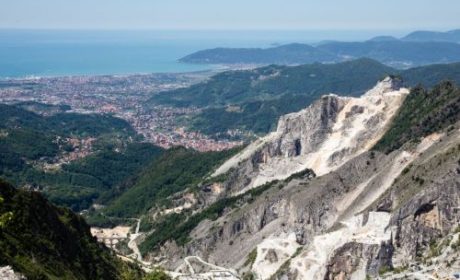Although we’ve explored some very remote areas in our travels, we’ve yet to make it to India. Known for its chaotic urban rhythms and exotic landscapes, India seems like a world unto itself. Today, guest contributor Lee Grewal, a former expat who lived in Delhi for three years, is here to give us a rundown on how to explore Delhi off the beaten track.
If I were to assign a personality to Delhi, she’d be a grand old lady and you’d easily forgive her folly’s in favour of her warmth, humour and colourful past. You’d welcome her eccentricities and admire her temperament. Most of all, you’d love the enriching stories she’d weave from her elegant drawing room and the masala chai she’d share with you at the end of the day.
To know Delhi is to understand something of her past, the layers of history that like whispers, reveal themselves quietly and echo softly. When you drive to the most elite of shopping worlds, you’ll casually pass a sauntering donkey or a cow sitting lopsided on the makeshift stalls spilling out onto the side of the road. You’ll see a weathered sandstone dome or temple spire rising out from the clumsy skyline and it’s so easy to include these silhouettes into the ramblings of the city but if you follow their quiet invitation, you’ll be rewarded with an experience that only meandering off the beaten track can give you.

For many years while driving down a main thoroughfare road, I’d see the tall empirical tower of the Qutub Minar rise into the sky. Finally, one day we stopped to go inside. I thought I’d be mesmerised by the tower itself, inscribed with flourishes of Arabic writing and each layer of stone a different shade of natural hue; what I didn’t expect was to be so enchanted with the Qutub complex that looks like a fallen city from the times of Troy. Crumbling archways, delicate spires and stone walls rough and exposed from the wearing of the ages. It’s not the first place you’d think of as a tourist but it gives you a rare and gentle insight into the rise and fall of an empire.

The book of Delhi has pages written from a thousand years ago and its many beautiful chapters crafted through the Raj, Hindu and Mogul empires have left remnants of their legacies across the city. When you take a walk through the sprawling Lodhi Gardens for example, dotted with tombs and mosques in Delhi’s south, it’s a long winding pathway where the history of kings and princesses peer out through the stone archways. It’s also in the heart of a cluster of fabulous village markets like Khan Market and Meher Chand where an eclectic cafe or 5-star restaurant will give you the most wonderful reprieve. That’s one of Delhi’s great charms; her ability to throw you to the wind and then lull you back in with her many comforts.

One such comfort is Delhi’s imperial delight; the hotel of the same name and a beautiful treasure trove of India’s majestic British Raj history. The Imperial Hotel is set in Janpath, literally meaning “the people’s path” and is a recluse from the bustling tirade of tourist stalls. Built in 1936, the hotel, with its stately white walls is an architectural mix of Victorian, Art Deco and Old Colonial and was designed to be one of the finest monuments of Lutyens’ grand vision of the city. Mr Lutyens certainly got it right and it’s now an appealing confluence of a rich history and modern day appreciation, home to many of Delhi’s foreign visitors who wouldn’t stay anywhere else. And while it’s a treat to stay there, even an afternoon tea is a sublime interlude from outside its grand gates.

Eager to keep exploring one morning we headed to the Mehrauli Archeological Park and as we walked along the pathways dipping alongside the soft rises in the grass, we realised it backs on to the Qutab Minar complex, yet as a heritage walk is an experience of its own. The most fascinating part of these walks is that they are almost always a surprise; from the roadsides tumbling with vegetable carts, flower stalls and street vendors, the roughly hewn stone walls that settle against their backdrop keep protected the secrets of the past. They take you to Persian inspired gardens, tombs, mosques and cities that in their prime would have been at the heart of the empire.
They’re relics of a broken and splintered history and most of the time, they look precisely that; Delhi is not brilliant at protecting these monuments and whether you’re visiting majestic Humayan’s Tomb, the grand Jama Masjid of Old Delhi or the fallen city of Tughlakabad, you’re likely to encounter stray dogs, beggars, squatters, hoards of amateur tourist guides and very little in the way of information or signage. But like most of Delhi, what she lacks in terms of refinement, she makes up for in a cultural overload that fills the senses.

As a thriving city bursting at the seams, Delhi is full of street bazaars, open markets and malls and each one has its own energy and vibe. One of my favourites is Hauz Khaus village with the lake of the same name as its backdrop. Hauz Khaus literally translates to “royal water tank” and it now houses an Islamic seminary, mosque, tomb and pavilions that date back to the 13th century. It was once a part of the second city of Medieval Delhi and is now an upmarket street market that came to life when local villagers began renting out their first floors to designers, artisans, cafes and galleries and now a walk down any of it’s quaint little streets reveals a unique mix of Delhi’s most affluent shopping while the villagers go about their every day.

In winter, the clouds and late morning fog hang low in the sky and everyone waits for spring to come. The streets are bare until midday and the parks are empty, though neither the cold nor the conditions can diminish the enthusiasm of the street kids tapping on the car window or blowing kisses singing “gori gori” (that would be for me, roughly translated as “white”) and literally bouncing through the traffic in a vibrant display of double jointed acrobatics. These kids are truly incredible. They go without so much, their home is the roadside, their education the tough knocks of an unsophisticated life, but I could look into their longing eyes forever.
Delhi is a city of extremes and for all of its confrontations and diversity, her warm embrace makes her home to so many. I love her cultural distinctions, her temperate devotion and her many off beat charms that give this grand old lady such lively spirit.
Have you had the chance to explore India? Come join the conversation at the My Itchy Travel Feet page on Facebook. Or send us an email with your thoughts.



